Prehistoric artifacts plentiful where Nellis jets rock the sky
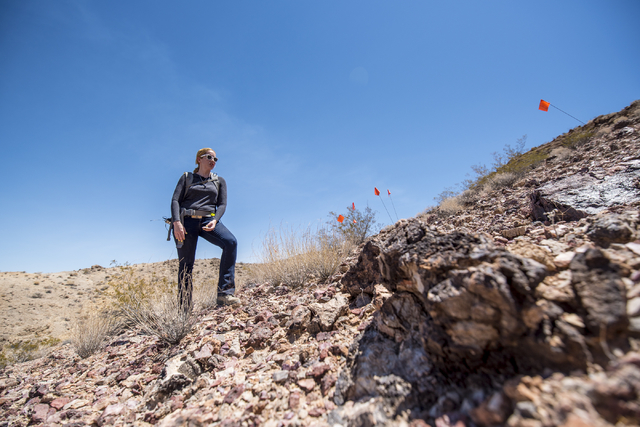
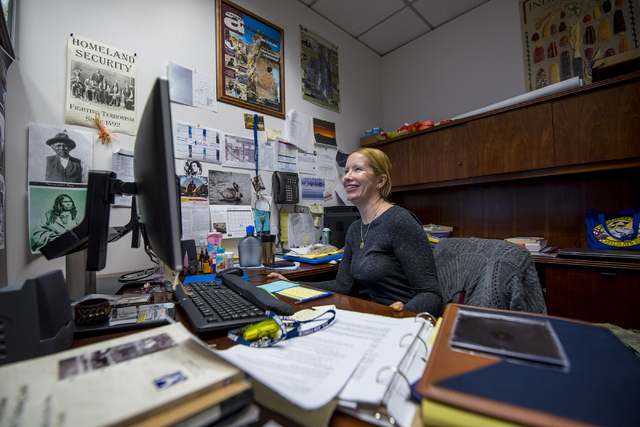
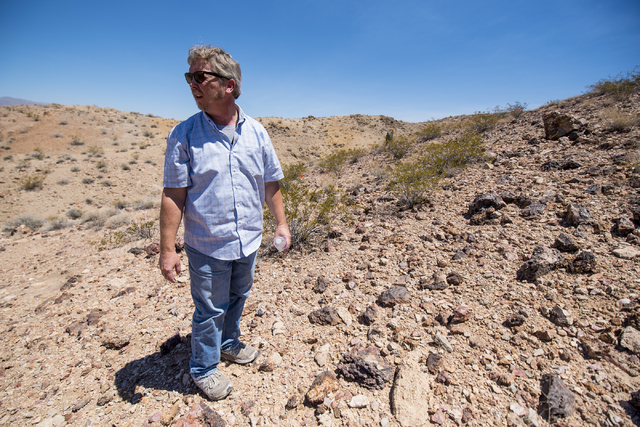
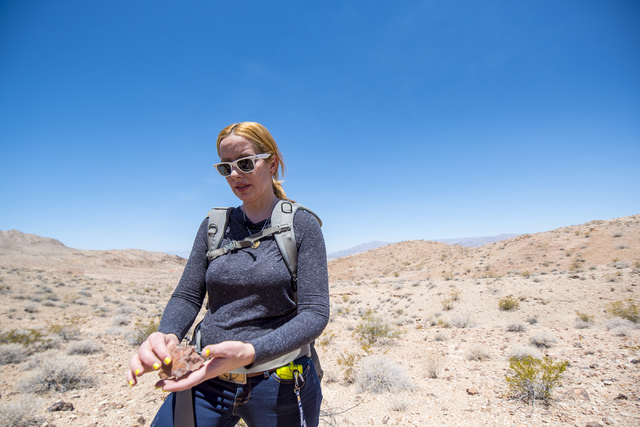

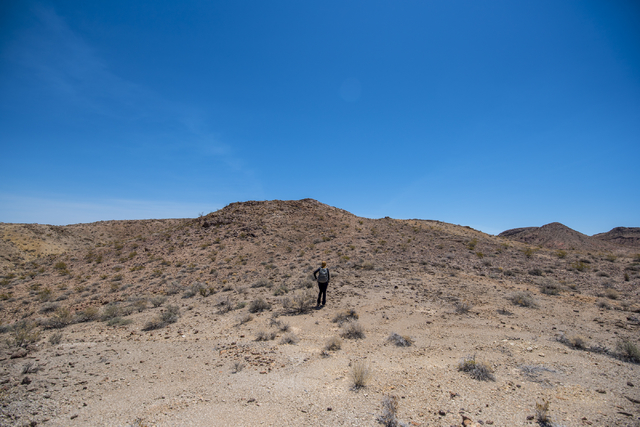
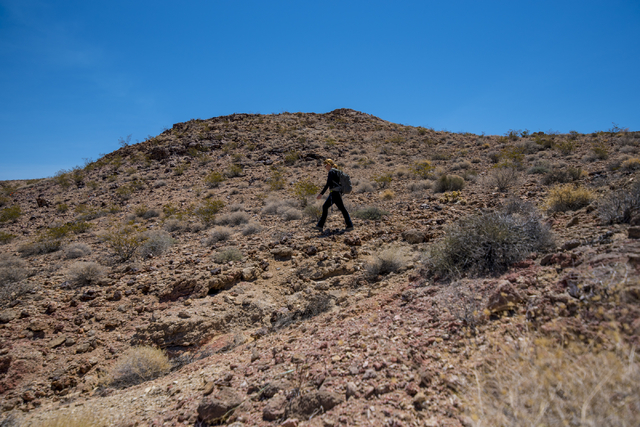
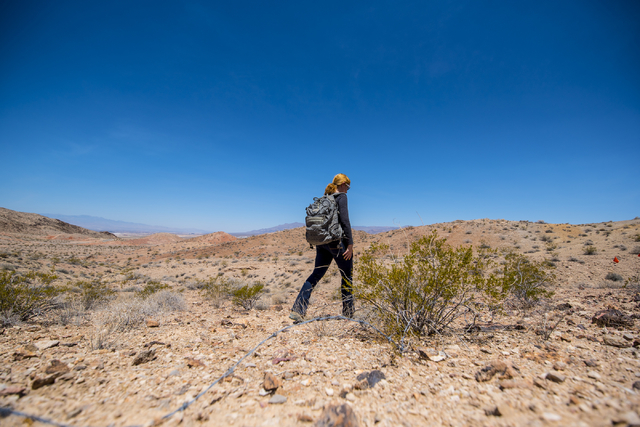
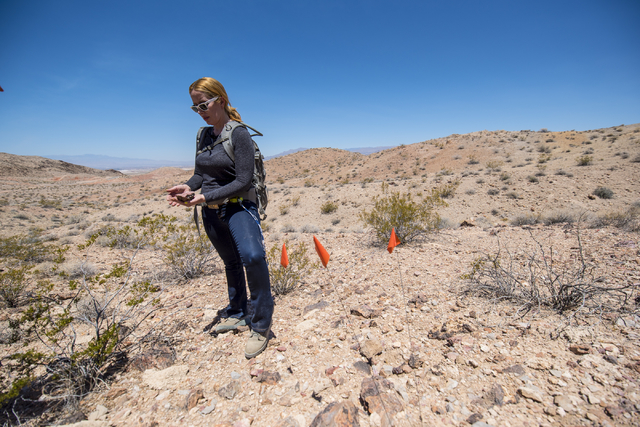
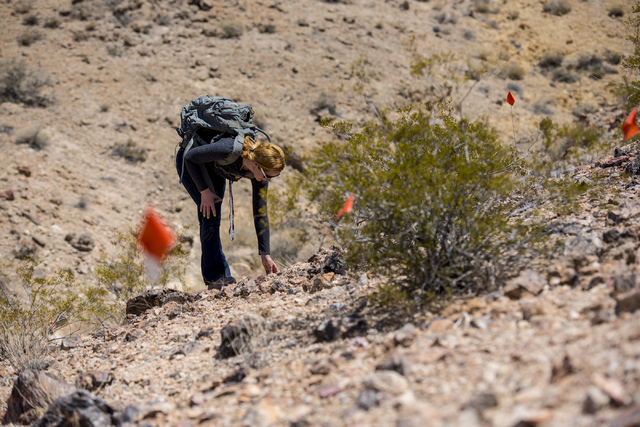

Kish LaPierre ambled over a rocky hillside on the northeast side of Nellis Air Force Base to a special place beyond the roar of fighter jets taking off from runways in the distance.
This place is so special that as base archaeologist she plans to nominate it for inclusion on the National Register of Historic Places. If it qualifies, it will be the first prehistoric site at the base to make the list.
It is where Native Americans perhaps as long a 5,000 years ago chipped away at fine-grain “chert” rocks from this quarry to make stone tools and spear points for the tips of darts that they would launch from throwing sticks, or “atlatls,” to kill bighorn sheep and other game, she said.
“There are numerous sites such as this on this base alone, not to mention at NTTR (Nevada Test and Training Range) but this site is so extensive. There are thousands of artifacts here,” she said.
LaPierre, who formerly worked at the Navy’s China Lake site in California, said she intends to compare fragments from the quarry with other collections in the area to see if the material fits with what’s been found at other archaeological sites, such as Gypsum Cave. That’s where famous anthropologist Mark R. Harrington, in the early 1930s, documented human habitation back to 3,000 B.C., and evidence of the giant ground sloth as long ago as 8,500 B.C.
“It’s potential to contribute more information is what were going to nominate it under,” LaPierre said about the Nellis chert quarry.
“We’re going to investigate the techniques used. There seems to be consistency with some of the techniques used, pieces in stages in which they transported them out of here and possible trade,” she said Wednesday, holding one sharp-edged “flake” in her hand as an example.
Although the exact age of the quarry site is unknown, she believes it predates the advent of the bow and arrow 1,500 years ago and certainly written history.
Through more research, she and her colleague, Jeff Kirkwood, chief of the base’s environmental assessment section, will try to determine if the quarry has any link to Gypsum Cave, an existing site on the National Register of Historic Places that’s about 5 miles to the east.
“There is an amazing history of Southern Nevada when it comes to Native American occupation,” said Kirkwood, who is a geologist. “I personally didn’t know a lot of it until Kish started pointing it out to me.”
Much work lies ahead to document countless sites on the sprawling Nevada Test and Training Range, north of the Las Vegas Valley, where only 8 percent of the 3 million-acre range for air combat exercises has been surveyed by archaeology teams.
“Because the bombing range has been shut off for the last 50 or so years, the public can’t get out there, they can’t disturb these archaeological sites. Hence they’ve just been preserved forever,” Kirkwood said.
He was particularly impressed with petroglyphs, or rock art etchings, that exist.
“There was one that was just your typical bighorn sheep. You can just picture someone hiding in this little spot, waiting for them to come to drink at the water. And while they’re waiting they drew this sheep on the wall,” he said.
LaPierre consults with 17 different tribes for her work as Nellis’ cultural resource program manager.
The test and training range has “some of the most phenomenal artifacts I’ve ever seen in my life,” she said.
“It’s like walking in a large, huge museum. You’ll see rock shelters with baskets still sitting there with seeds inside them. Pots. We just found a rock shelter with a pot that had pine pitch inside it,” LaPierre said. “We found recently a cache of arrow shafts for use of bow and arrow and they were painted. It just goes on and on. It’s just like people left camp and didn’t return.”
Another important find on a recent survey on the range was an Olivella shell bead — a seashell from the California coast near Santa Barbara — evidence that American Indians traveled a long distance to trade with tribes on what is now the Nevada Test and Training Range.
“That just shows how far people were trading,” she said.
While LaPierre’s work has focused on sites that predate written history, she said there are “some really phenomenal historic sites, military related, early World War II era and early Cold War era” as well as some interesting mining structures on the range.
She said documenting archaeology on the base and range “is very important because we’re American and we’re protecting our own history. We want to protect that and pass it on to future generations as our guide to learn from the past.
“Just like this ground quarry with these stone tools, they were storing munitions here like they are now thousands of years ago,” LaPierre said.
Contact Keith Rogers at krogers@reviewjournal.com or 702-383-0308. Find him on Twitter: @KeithRogers2.












